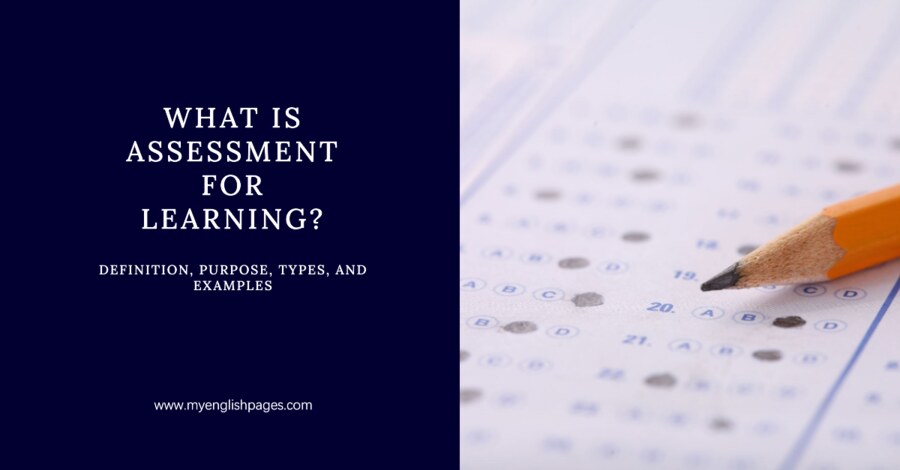Table of Contents
What is Assessment for Learning?
Assessment for Learning (AFL), also known as formative assessment, is an ongoing process of gathering and interpreting evidence about students’ learning to inform and adjust teaching and learning strategies. Unlike traditional assessments that focus solely on grading, AFL emphasizes using feedback to guide learners toward achieving their goals.
It typically begins with a diagnostic assessment to identify students’ prior knowledge and continues with formative assessments to monitor progress and adapt instruction accordingly.
AFL is a collaborative process involving both teachers and students. Teachers use the insights gained to tailor their instruction, while students use feedback to reflect on their learning and identify areas for improvement. This approach fosters a growth mindset and encourages active participation in the learning process.
What is the Purpose of Assessment for Learning?

The primary purpose of AFL is not to assign grades or scores but to provide actionable insights into students’ learning progress. It serves as a tool to:
- Identify students’ strengths and areas for improvement.
- Inform instructional decisions and adapt teaching methods to meet learners’ needs.
- Encourage students to take ownership of their learning by reflecting on their progress.
- Create a feedback loop that supports continuous improvement for both teachers and learners.
By focusing on growth rather than judgment, AFL helps create a supportive learning environment where students feel empowered to achieve their goals.
What Are the 3 Types of Assessments?
To better understand AFL, it’s helpful to contrast it with other types of assessments:
- Assessment of Learning (Summative Assessment):
This type of assessment evaluates students’ understanding at the end of a unit, course, or academic term. It is often used to measure achievement against standards or benchmarks and typically results in grades or scores. Examples include final exams, standardized tests, and end-of-term projects. - Assessment for Learning (Formative Assessment):
AFL focuses on providing ongoing feedback to guide instruction and learning. It helps teachers and students identify gaps in understanding and adjust their strategies accordingly. Examples include quizzes, peer feedback, and classroom discussions. - Assessment as Learning:
This approach emphasizes metacognition, encouraging students to reflect on their learning processes, set goals, and monitor their progress. It empowers learners to take responsibility for their education and develop self-regulation skills. Examples include self-assessment checklists, learning journals, and goal-setting activities.
Additionally, assessments can be categorized based on their timing:
- Assessment Before Learning (Diagnostic Assessment): Used to gauge students’ prior knowledge and identify learning needs before starting a new unit.
- Assessment During Learning (Formative Assessment): Conducted throughout the learning process to monitor progress and provide feedback.
- Assessment After Learning (Summative Assessment): Administered at the end of a unit or course to evaluate overall achievement.
While diagnostic and formative assessments are integral to AFL, summative assessments provide a summary of learning outcomes and may inform future instructional planning.
Assessment for Learning and Learner-Centered Teaching

AFL aligns closely with learner-centered teaching, which prioritizes students’ active involvement in their learning journey. Both AFL and assessment as learning encourage students to reflect on their progress, set goals, and take ownership of their education.
The ultimate goal is to cultivate self-regulated learners—individuals who are confident, motivated, and capable of directing their own learning throughout their lives. Teachers play a crucial role in this process by:
- Identifying students’ starting points through diagnostic assessments.
- Continuously monitoring progress using tailored assessment tools.
- Providing timely and constructive feedback to address learning gaps.
- Encouraging students to reflect on their learning and set personal goals.
By fostering a collaborative and reflective learning environment, AFL helps bridge the gap between teaching and learning, ensuring that instruction is responsive to students’ needs.
Examples of Assessment for Learning

AFL employs a variety of tools and strategies to gather feedback and guide learning. Here are some practical examples:
1. Questions
Teachers use open-ended and probing questions to assess students’ understanding and identify areas where further instruction is needed. Questions can be asked during discussions, quizzes, or one-on-one interactions.
2. Peer Assessment
Students provide feedback to their peers using established success criteria. This process helps them develop critical thinking skills and gain insights into their own learning.
3. Self-Assessment
Students reflect on their learning, identify strengths and weaknesses, and set goals for improvement. Tools like rubrics, checklists, and reflection journals are commonly used.
4. KWL Chart
At the beginning of a lesson, students create a chart with three columns:
| What I Know | What I Learned | What I Learned |
|---|---|---|
| Prior knowledge about the topic. | Questions or goals for the lesson. | Insights gained after the lesson. |
This tool helps students organize their thoughts and track their learning progress.
5. Summarizing
Students summarize key points from a lesson, either at the beginning to activate prior knowledge or at the end to consolidate learning.
6. One Question
At the end of a lesson, students prepare one question about what they learned. Collecting these questions helps teachers identify areas that need further clarification.
7. Journals
Students maintain learning journals to document their thoughts, reflections, and progress. Journals provide valuable insights into students’ learning processes and help them develop metacognitive skills.
8. Portfolios
A portfolio is a systematic collection of students’ work over time, including assignments, tests, self-assessments, and feedback. It provides a comprehensive view of their progress and helps teachers tailor instruction to individual needs.
FAQs: Assessment for Learning
What is the meaning of assessment for learning?
Assessment for Learning (AFL) is an ongoing process where teachers and students gather and interpret evidence about learning to adjust teaching strategies and improve student outcomes. Unlike traditional assessments that focus on grading, AFL emphasizes providing feedback to guide learning and help students achieve their goals. It is a formative approach that supports personalized instruction and encourages students to take an active role in their learning journey.
What is an example of an assessment for learning?
An example of AFL is the use of KWL Charts. At the start of a lesson, students create a chart with three columns:
– What I Know: Their existing knowledge about the topic.
– What I Want to Know: Questions or goals they have for the lesson.
– What I Learned: Insights gained after the lesson.
This tool helps teachers identify students’ prior knowledge and tailor instruction to meet their needs, while also encouraging students to reflect on their learning progress.
What is the difference between assessment of learning and assessment for learning?
– Assessment of Learning (Summative Assessment):
This type of assessment evaluates students’ understanding at the end of a unit or course. It is used to measure achievement against standards and typically results in grades or scores (e.g., final exams, standardized tests).
– Assessment for Learning (Formative Assessment):
AFL focuses on providing ongoing feedback to guide instruction and learning. It is used during the learning process to identify gaps, adjust teaching strategies, and help students improve. Examples include quizzes, peer feedback, and self-assessment activities.
In short, assessment of learning looks at outcomes, while assessment for learning focuses on the process of learning and growth.
Why do we need assessment for learning?
We need AFL because it:
– Supports Personalized Learning: Helps teachers identify individual student needs and tailor instruction accordingly.
– Encourages Student Ownership: Empowers students to reflect on their progress, set goals, and take responsibility for their learning.
– Provides Timely Feedback: Offers actionable insights to both teachers and students, enabling continuous improvement.
– Fosters a Growth Mindset: Shifts the focus from grades to growth, creating a positive and supportive learning environment.
– Improves Learning Outcomes: By addressing gaps and adapting instruction, AFL helps students achieve their full potential.
In essence, AFL is essential for creating a dynamic, responsive, and learner-centered educational experience.
Conclusion
Assessment for Learning is a powerful approach that shifts the focus from grading to growth. By providing ongoing feedback and encouraging reflection, AFL helps teachers and students work together to achieve learning goals. It fosters a learner-centered environment where students take ownership of their education and develop the skills needed for lifelong learning.
AFL offers a wide range of tools to support effective teaching and learning. These include questions, peer feedback, self-assessment, or portfolios. By integrating these strategies into the classroom, educators can create a dynamic and responsive learning experience that empowers every student to succeed.
More About AFL:
Related Pages
- Definition of testing, assessment, and evaluation
- Summative Vs Formative Assessment: All You Need To know
- Differentiated Instruction: Meeting the Diverse Needs of Learners
- Empowering Students: The Key to Personalized Learning
- Personalized Learning Vs Differentiated Instruction: Understanding the Key Differences


